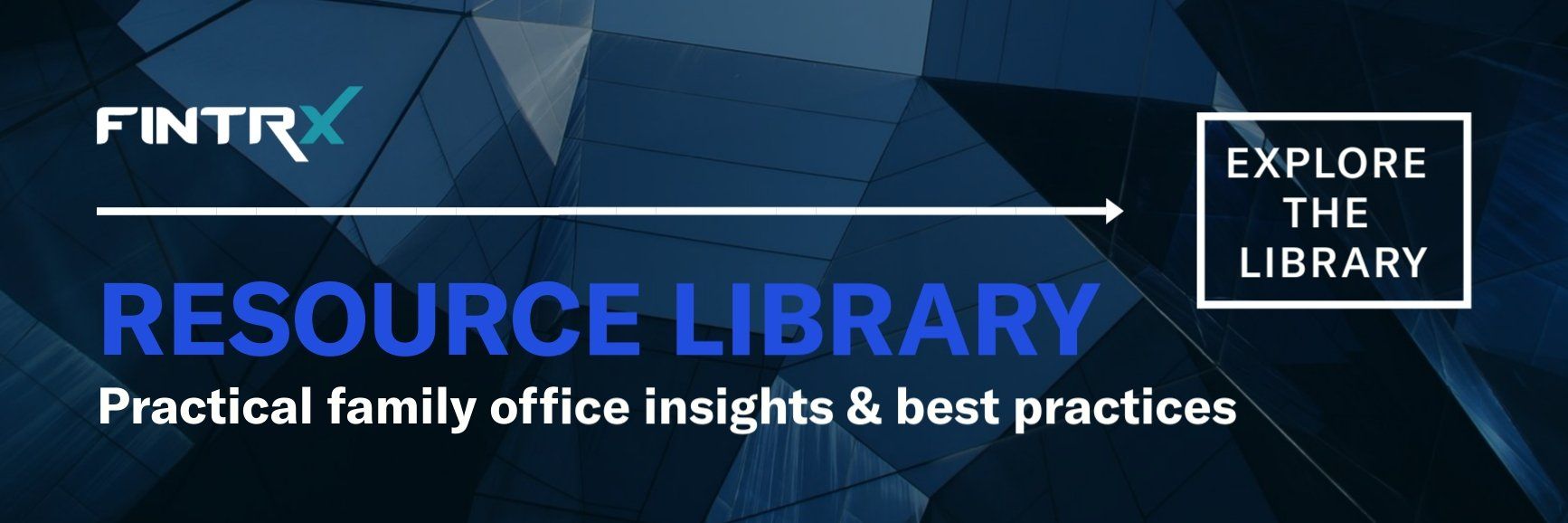START YOUR FREE TRIAL
GET STARTED
The Industry’s Most Trusted Private Wealth Data—Comprehensive, Accurate, and Current
Explore the leading platform used by asset managers to find and engage with RIAs, Broker-Dealers, Family Offices, Foundations & Endowments. Request your free trial of FINTRX now and see for yourself.
Blog & Resources
NEWS AND INSIGHTS FROM FINTRX
Family Offices: Adapting to the Modern Era
Over the last several years, the family office space has experienced immense growth in terms of size, scope and prevalence. Amid today's turbulent market environment, family offices are exposed to a whole new set of challenges and opportunities. Fortunately, their adaptive nature makes them the perfect fit in this type of volatile environment. To better understand the dynamic nature of these private wealth entities, we explore three ways family offices are adapting to — and mastering — the unique challenges inherent to wealth ownership amid today’s unpredictability.
Despite the current market conditions, we continue to see an upswing in global family office investment activity. Family offices recognize the need for flexibility, sophistication and effective governance when running an impactful operation.
Yet, the challenge remains to ensure that all relevant stakeholders not only perform successfully to fulfill the specific wants and needs of their clients but to do so in harmony so the whole group grows and evolves together. Below, we explore three ways family offices rise to the challenges and opportunities inherent to wealth ownership.
1. Family offices are attempting to enhance and broaden their internal operations
Not only are existing family offices growing and expanding — along with the size of AUM — but new ones are being formed at a rate faster than ever before. Described by Bloomberg as "the vehicle of choice to protect and preserve assets for future generations," modern family office structures take their traditional 'one-stop shop' approach to a whole new level. Nowadays, family offices have become increasingly dynamic, adaptive and more willing to acquire outside partners hoping to optimize internal processes. These private entities work one-on-one with families, helping to reduce complexity by coordinating advisors and incorporating financial goals that align with the values and goals of each client. The key is to build a unique, individualized approach for each client - as opposed to a generic self-service experience.
→ Becoming increasingly savvy, equipping their teams with specialized talent
→ Because of this increase in specialized talent, many firms can broaden internal investment capabilities (private equity & real estate investment professionals in particular)
2. More actively involved in preserving their family legacy
Family offices are well-positioned to break out of their traditional financial management role to manage activities for the family. Today, family offices are a bit more inclusive with their client(s), offering more of a holistic approach to wealth management. This ultimately gives family members a bit more control as to the causes and initiatives that matter most to the family.
→ The mission and vision of the family drive the work of the office itself
→ Committed to strategic asset allocation
→ Focused on building multi-generational wealth recognize they can structure their own deals in line with their goals
3. Transforming internal operations for a digital world; Tapping into the value of digital transformation
Emerging technologies have been disrupting industries worldwide, and the alternative wealth space is one of them. A large number of organizations underestimate the increasing momentum of digitization, but modern family office structures are not one of them. Adapting to the constant changes in market trends means keeping clients top of mind. Firms should ensure strong connections — via technology or face-to-face — that engage them throughout their journey, oftentimes for generations to come.
→ Showing a greater aptitude for digital advancements simplifies internal processes, maximizes efficiency and promotes transparency throughout the organization
→ From digital payment systems to virtual reality training programs, these high-tech solutions help family offices see increased efficiencies and stay ahead
Conclusion
Thanks to the adaptive nature of the modern family office structure — which comprises savvy financial experts that come equipped with a sophisticated understanding of the space — it is no wonder these groups are still standing strong. With agility built into their DNA, there is no doubt family offices will continue in this evolution. The challenge is being able to ensure all parties unite their efforts for the greater purpose of the family.
FINTRX provides comprehensive data intelligence on 850,000+ family office & investment advisor records, each designed to help you identify, access and map the private wealth ecosystem. Explore in-depth dossiers on each family office & investment advisor. Access AUM, source of wealth, investment criteria, previous investment history, sectors & industries of interest, and advisor growth signals, amongst other key data points.
Additionally, FINTRX provides insight and expansive contact information on 850,000+ decision-makers, featuring job titles, direct email addresses, phone numbers, common connections, alma maters, past employment history, brief bios & much more.
For an in-depth exploration of the FINTRX family office platform, click below.
Written by: Renae Hatcher |
August 06, 2020
Renae Hatcher is a member of the marketing team at FINTRX - focused on delivering targeted & relevant family office and registered investment advisor content to our subscribers.
Similar Content
COMPANY
COMPARE US

Copyright © 2025 FINTRX, Inc. All Rights Reserved. 18 Shipyard Drive Suite 2C Hingham, MA 02043 Data Privacy Policy
.png?width=367&height=109&name=ezgif.com-gif-maker%20(3).png)



